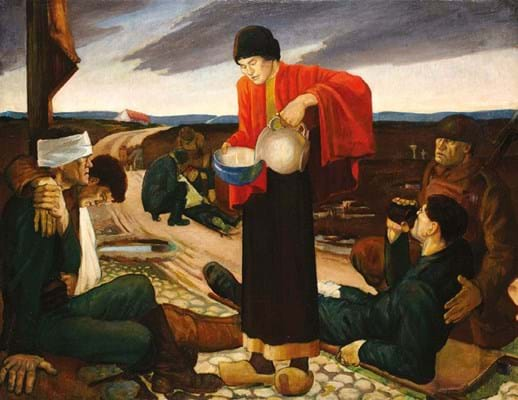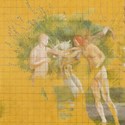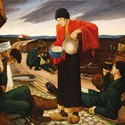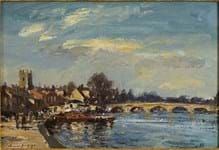“I don’t think this picture has anything to do with the Garden of Eden story,” he said later. “But I am no more able to explain its exact meaning now than I was at the time I painted it.” The final – and ultimately unfinished – composition, which features these figures at the centre, includes several links to myth, legend and the Bible.
Like many of the works in the show, Monnington’s study toes a line between traditional Christian ideas and imagery and the secular society in which it was produced.
It joins 171 other paintings, drawings and works on paper by 73 artists for the show dubbed Art, Faith and Modernity. This exhibition is at The Ambulatory at The Mercers’ Company in London until July 26, where it is open by appointment, and then moves to Liverpool Cathedral from August 6-30.
At the end of the show a select number of the works will be available for sale from the dealership, though some have come to the show on loan.
Unexplored area
Liss Llewellyn is a champion for lesser-known figures in Modern British art and this show is no exception, bringing to the fore a relatively unexplored area in the field.
The catalogue, compiled by the dealership’s Sacha Llewellyn and Paul Liss, is divided into broad categories based on broad Christian subjects: Old Testament, New Testament, saints and angels, ritual and devotion, architecture, and ‘War: Faith Perturbed’.
“Monnington’s attitude was typical of his generation,” Liss writes in the preface to the catalogue. “Although religion was not a defining ingredient of his art, the search for meaning in a wider spiritual context was.”
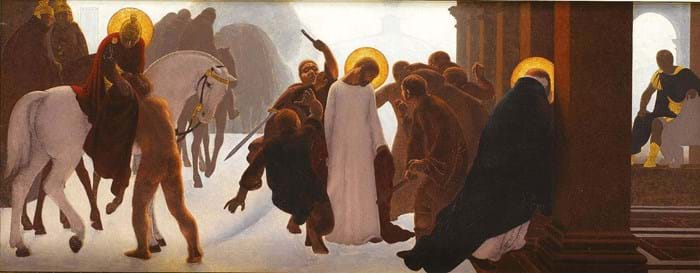
Glyn Jones, Study for St Martin’s Altarpiece, Canterbury Cathedral, c.1927, tempera on board, 14in x 3ft 1in (35.5 x 94cm), £22,500 at Liss Llewellyn.
Not all are ambiguous in their subject matter. Glyn Jones’ study of an altarpiece in the Milner Memorial Chapel at Canterbury Cathedral (c.1927), for example, depicts scenes from the life of St Martin. In preparing for the commission, Jones travelled around Italy, relinquishing the third year of his scholarship to the British School at Rome to concentrate on it. However, in 1928 the painting was rejected by the Cathedral Committee.
Alan Powers, who wrote the introductory essay for the show’s extensive catalogue, suggests that the problems may have stemmed from the work’s modern aesthetic: “Presumably the power of the silhouettes in Glyn Jones’s first version were too much for the committee – too modern in style, and perhaps too disturbing in mood for commemoration of Lord Milner, self-confessed ‘British Race Patriot’.”
The commission went instead to Winifred Knights, some of whose works are also included in this show.
As well as illustrating the development of religious imagery, the show also showcases the many styles and hands at work at Britain in the last century. Other major artists represented include Stanley Spencer, Evelyn Dunbar, Clare Leighton and Eric Gill.
A selection also appears by less familiar names, and even one c.1920 painting of The Good Samaritan by an unknown hand. This adapts the biblical story, showing women attending to First World War soldiers of different nationalities. It may be set at the Belgian front with the feet of a figure of Christ visible in the top left-hand corner, making it both a timely and symbolic image.



